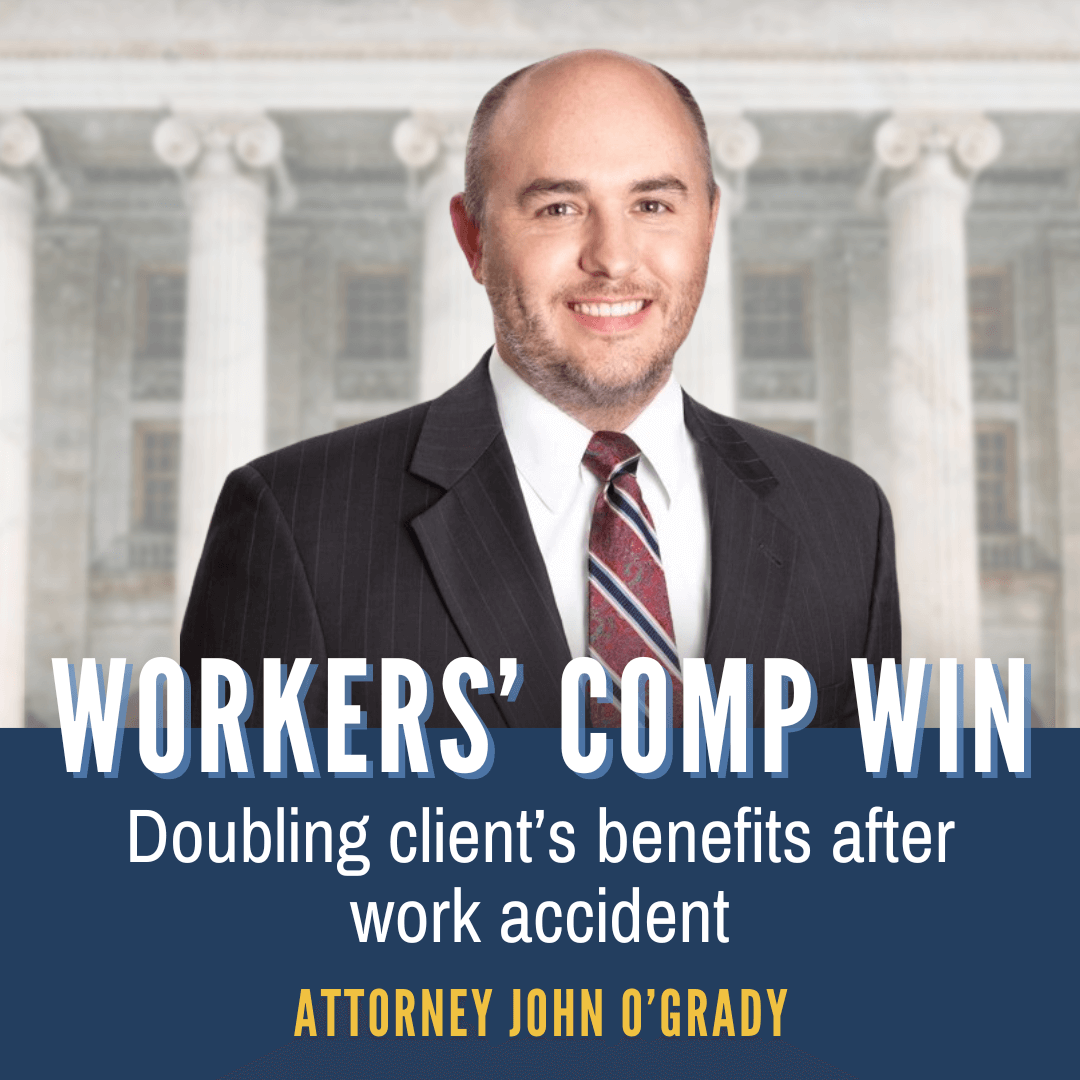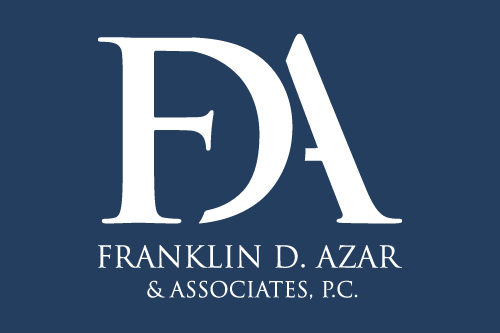Understanding the Aftermath and Your Rights
If you or a loved one suffered injuries in a car accident someone else’s negligence caused, you’re likely overwhelmed with questions, concerns, and a deep sense of injustice. You likely qualify to obtain compensation for your injuries and losses, but you have a lot to consider when pursuing an injury claim.
You need to understand the various types of car accidents and their potential consequences to help determine your best course of action. From minor fender-benders to catastrophic multi-vehicle pile-ups, each type of vehicle accident presents unique challenges and legal implications.
Read on to learn about the common types of car accidents, their causes, and what you can do to protect your rights and seek justice. For specific advice regarding your situation, contact a car accident attorney near you for a free consultation. A Denver car accident lawyer can advise you of your rights and options, provide crucial legal support and guidance, and fight for the maximum compensation you deserve.
Denver Car Accident Guide
-
- Rear-End Collisions
- Head-On Collisions
- Side-Impact (T-Bone) Accidents
- Intersection Accidents
- Merging and Lane Change Accidents
- Hit-and-Run Accidents
- Multi-Vehicle Pile-Ups
- Low-Speed Accidents
- Determining Liability in Car Accident Cases
- What to Do Immediately After a Car Accident
- How a Car Accident Lawyer Can Help You Get Compensation
- What Types of Compensation Can You Receive from a Car Accident
- Don’t Let Time Run Out
- Contact Our Colorado Car Accident Attorneys Today
Rear-End Collisions
Rear-end collisions are among the most common types of car accidents. They occur when one vehicle strikes the back of another. These accidents can happen in various settings, from busy highways to quiet residential streets. Common causes include:
- Distracted driving (e.g., texting, eating, or adjusting the radio)
- Tailgating or following too closely
- Sudden stops by the lead vehicle
- Poor weather conditions affecting visibility or road traction
- Fatigued driving
- Impaired driving due to alcohol or drugs
While often perceived as minor “fender-benders,” rear-end collisions can result in serious injuries, particularly whiplash and other neck and back injuries. Even at low speeds, the sudden impact can cause significant harm to the occupants of both vehicles.
Legal Implications and Liability
In most cases, insurance companies, the courts, and law enforcement presume that the driver of the rear vehicle is at fault in a rear-end collision. They base this presumption on the principle that all drivers have a duty to maintain a safe following distance and be prepared to stop if the vehicle in front of them slows or stops suddenly. However, there are exceptions to this rule, such as:
- If the front vehicle suddenly reverses
- If the front vehicle’s brake lights are not functioning properly
- If the front vehicle stops abruptly for no apparent reason
- If the rear vehicle is pushed into the front vehicle by another vehicle
Determining liability in these cases often requires a thorough investigation and may involve gathering evidence such as witness statements, traffic camera footage, and expert accident reconstruction.
Head-On Collisions
 Head-on collisions occur when the front ends of two vehicles traveling in opposite directions crash into each other. These accidents are among the most severe and deadly types of car accidents due to the combined force of both vehicles’ speed at impact. Head-on collisions often result in catastrophic injuries or fatalities, including:
Head-on collisions occur when the front ends of two vehicles traveling in opposite directions crash into each other. These accidents are among the most severe and deadly types of car accidents due to the combined force of both vehicles’ speed at impact. Head-on collisions often result in catastrophic injuries or fatalities, including:
- Traumatic brain injuries
- Spinal cord injuries and paralysis
- Severe internal organ damage
- Multiple fractures and crush injuries
- Severe lacerations and disfigurement
Survivors of head-on collisions often face long-term or permanent disabilities, extensive medical treatments, and significant emotional trauma.
Factors Contributing to Head-On Crashes
Several factors can lead to head-on collisions, including:
- A driver drifts into oncoming traffic because of distraction, fatigue, or intoxication
- Unsafe passing maneuvers on two-lane roads
- Wrong-way driving, particularly on highways or one-way streets
- Loss of vehicle control due to speeding, poor weather conditions, or mechanical failures
- Poorly designed or maintained roads lacking proper signage or barriers
Given the severe consequences of head-on collisions, victims and their families must seek legal representation to ensure they receive full compensation for their extensive losses and ongoing needs.
Side-Impact (T-Bone) Accidents
Side-impact or T-bone accidents happen when the front of one vehicle crashes into the side of another, forming a “T” shape. These collisions often occur at intersections and can be particularly dangerous due to the limited protection on a vehicle’s sides.
T-bone accidents frequently result from:
- Running red lights or stop signs
- Failing to yield the right-of-way
- Misjudging gaps in traffic when turning
Injuries in T-bone accidents can be severe, especially for passengers on the impacted side of the vehicle. Common injuries include head trauma, spinal cord injuries, and internal organ damage. Pelvic fractures are also common as well as other broken bone injuries.
Intersection Accidents
Intersections are hotspots for various types of accidents, including:
- T-bone collisions
- Rear-end accidents
- Left-turn crashes
- Right-turn accidents
Right-of-Way Considerations
Many intersection accidents stem from confusion or disregard for right-of-way rules. Key considerations include:
- Traffic signal compliance: Drivers must obey traffic lights and stop signs.
- Left-turn yield: Vehicles turning left typically must yield to oncoming traffic.
- Four-way stops: Vehicles should proceed in the order they arrived at the intersection.
- Yield signs: Drivers must yield to traffic on the main road before entering.
- Pedestrian right-of-way: In most cases, pedestrians have the right-of-way in crosswalks.
Drivers need to understand and follow these rules to prevent intersection accidents. However, when collisions do occur, determining fault often requires a careful analysis of the specific circumstances and any potential traffic violations.
Merging and Lane Change Accidents
Merging and lane change accidents often result in sideswipe collisions, where the sides of two vehicles make contact. Common causes include:
- Failure to check blind spots before changing lanes
- Distracted driving leading to unintended lane drift
- Aggressive driving behaviors, such as cutting off other vehicles
- Misjudging the speed and position of nearby vehicles
- Merging without proper signaling or yielding
- Poor visibility due to weather conditions or obstructions
While sideswipe collisions may seem less severe than other types of accidents, they can still cause significant injuries and property damage. They can also lead to more serious secondary collisions if a vehicle loses control after the initial impact.
Legal Responsibilities When Changing Lanes
Drivers have specific legal responsibilities when changing lanes or merging:
- Turning on turn signals before making a lane change
- Checking mirrors and blind spots for other vehicles
- Yielding to vehicles already in the lane
- Maintaining a safe speed and distance during the maneuver
- Avoiding lane changes in areas where it’s prohibited (e.g., solid lines, construction zones)
Drivers who fail to follow these responsibilities can be liable for any injuries or damages resulting from an accident they cause. If a negligent driver merged into you or changed lanes abruptly, causing you to crash, contact a car accident lawyer right away to discuss your options for seeking compensation.
Hit-and-Run Accidents
A hit-and-run occurs when a driver involved in an accident flees the scene without providing their information or rendering aid. This is a criminal offense in all states, with penalties ranging from fines to imprisonment.
The legal consequences for hit-and-run drivers can be severe, including:
- Criminal charges ranging from misdemeanors to felonies
- Hefty fines and potential jail time
- License suspension or revocation
- Increased insurance premiums or loss of coverage
- Civil liability for damages caused in the accident
The severity of penalties often depends on factors such as the extent of injuries or property damage, the driver’s prior record, and whether alcohol or drugs were involved.
What to Do After a Hit-and-Run Crash
If another driver struck your vehicle and then took off, you need to:
- Call the police immediately
- Gather witness information and any available evidence
- Document the scene with photos and notes
- Contact your insurance company
- Seek medical attention, even if you feel fine
After you get medical treatment, contact a car accident lawyer in your area to determine your next steps.
Multi-Vehicle Pile-Ups
Multi-vehicle accidents involve three or more vehicles and often occur on highways or in poor weather conditions. They can start with a single collision that triggers a chain reaction of crashes.
Key characteristics include:
- Rapid succession of impacts as vehicles collide with those already involved in the initial crash
- Difficulty for drivers to avoid the collision due to limited reaction time and space
- Increased risk of secondary accidents as other drivers approach the scene
- Potential for fires or hazardous material spills, especially if commercial vehicles are involved
- Complex rescue operations due to the number of vehicles and victims involved
The chaotic nature of multi-vehicle pile-ups can lead to a wide range of injuries, from minor cuts and bruises to life-threatening trauma.
Challenges in Determining Fault
Multi-car pile-ups often involve multiple at-fault parties, making it difficult to determine liability. You need a lawyer to thoroughly investigate the incident and call on expert analysis if necessary to untangle the sequence of events and assign fault.
Single-Vehicle Accidents
Single-vehicle accidents involve only one vehicle but can still result in serious injuries or fatalities. Common types include:
- Rollovers
- Run-off-road accidents
- Collisions with stationary objects (trees, poles, barriers)
Potential Liability Issues
While many assume the driver is always at fault in single-vehicle accidents, other factors can contribute, such as:
- Defective vehicle parts
- Poor road design or maintenance
- Actions of another driver who didn’t make contact
If a driver caused a single-vehicle crash that injures or kills someone in the car through their carelessness or recklessness, injured passengers or surviving family members of those killed can seek compensation.
Low-Speed Accidents
Even low-speed accidents, such as parking lot incidents and fender benders, can result in injuries and have legal implications. Whiplash, for example, can occur at speeds as low as 5 mph. Never assume that a low-speed collision is too minor to warrant medical attention or legal consideration.
Determining Liability in Car Accident Cases
To have a valid car accident claim, you need an attorney to establish liability. This can be complicated in some cases, and some factors that come into play include:
- Traffic laws and regulations
- Eyewitness accounts
- Physical evidence from the crash scene
- Police reports
- Expert accident reconstruction
An experienced car accident attorney can help gather and analyze this evidence to build a strong case for your claim.
What to Do Immediately After a Car Accident
The actions you take immediately following a car accident can significantly impact your ability to recover compensation. Here’s what you should do:
- Check for injuries and call 911 if necessary
- Move to a safe area if possible
- Exchange information with other involved parties
- Gather evidence (photos, witness contact info)
- Don’t admit fault or discuss the accident details
- Seek medical attention, even if you feel fine
- Contact your insurance company
- Contact a car accident attorney before giving statements or accepting settlements
How a Car Accident Lawyer Can Help You Get Compensation
 An experienced car accident attorney can:
An experienced car accident attorney can:
- Investigate the accident thoroughly
- Gather and preserve crucial evidence
- Handle all communication with insurance companies
- Accurately calculate the full extent of your damages
- Negotiate for a fair settlement
- Take your case to trial if necessary
What Types of Compensation Can You Receive from a Car Accident Claim?
Potential compensation in a car accident claim may include:
- Medical expenses (past and future)
- Lost wages and loss of earning capacity
- Pain and suffering
- Property damage
- Loss of consortium
- Punitive damages (in cases of extreme negligence)
- Wrongful death damages in cases of car accident fatalities
Don’t Let Time Run Out
In Colorado, the statute of limitations for personal injury lawsuits arising from car accidents is generally three years from the date of the accident. However, there are exceptions that can extend or shorten this time frame:
- If the accident resulted in death, the statute of limitations for a wrongful death claim is two years from the date of death.
- If the at-fault party is a government entity, you may have as little as 180 days to file a notice of claim.
- For minors, the statute of limitations may be tolled until they reach the age of 18.
You must contact an attorney as soon as possible after an accident to ensure you don’t miss any important deadlines.
Contact Our Colorado Car Accident Attorneys Today
If you suffered injuries or losses in any type of car accident in Colorado, don’t wait to get the legal help you need to hold the at-fault driver accountable and obtain compensation.
The experienced team at Franklin D. Azar & Associates, P.C. has fought for the rights of injured clients throughout Colorado for more than 30 years, recovering more than $2.3 billion in total compensation. We have the skills, knowledge, and resources to handle your case effectively and the passion to fight for every penny you deserve.
Don’t let insurance companies undervalue your claim or pressure you into a quick settlement. Let us handle the legal complexities while you focus on your recovery. Contact us today for a free, no-obligation consultation. We’ll review your case, explain your rights, and help you understand your options for seeking maximum compensation.




